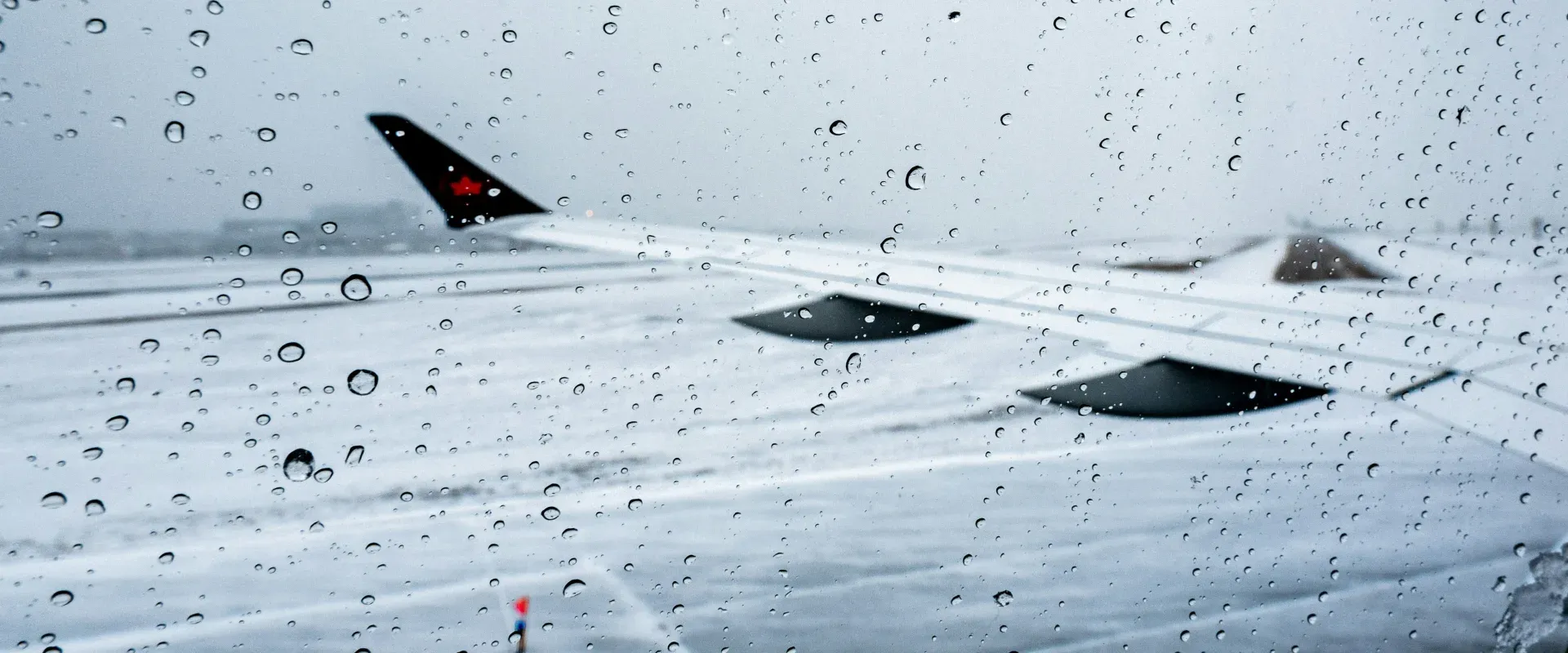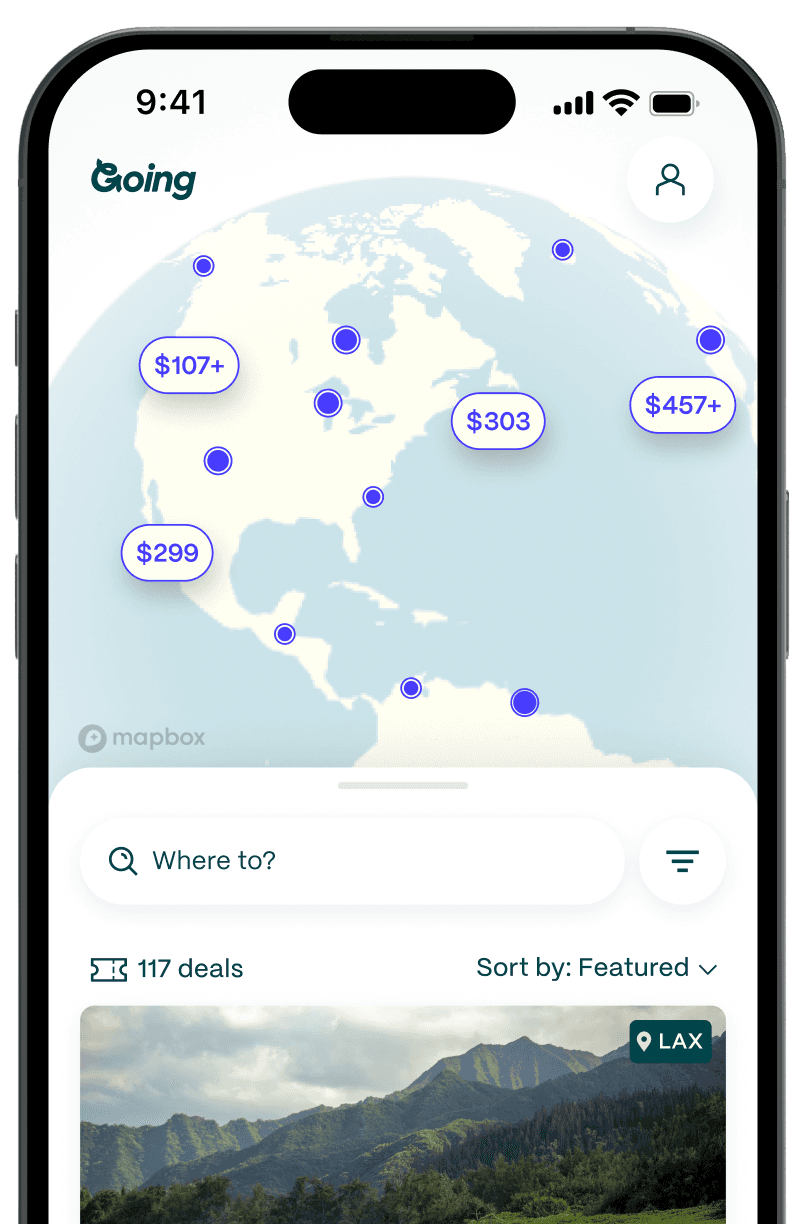
How Long Should Your Layover Be?
There’s nothing like sprinting through an airport from one gate to another to humble you. Layovers often make the difference between whether you show up to your connecting flight cool, calm, and collected, a sweaty mess, or worse, after the boarding gate has already closed. The good news: It doesn’t have to be a complete gamble. We like to ask ourselves these seven questions when booking a flight with a connection, whether it’s domestic or international.
1. What’s the posted minimum connection time (MCT) for the airport?
Every airport has an MCT, and an airline won’t book you on a layover below that amount. MCTs can vary within an airport and depend on several factors, like which terminal you’re flying into and out of, whether you’re flying domestic or international, and the time of day that you’re flying.
For example, the MCT at Amsterdam Airport Schiphol (AMS) is 40 minutes for domestic flights and 50 minutes for international flights.
While the MCT may be less than you are personally comfortable with (depending on the other factors below), it can be a good starting point to know if your layover is too short.
2. How flexible are my plans?
If you miss your connection and arrive at your destination several hours (or even a day or two) late, what are the consequences? Say you’re traveling to attend a wedding, work event, graduation, or the birth of a child. You may not want to book a connecting flight with a short layover, as it could result in you missing the event that you’re traveling for altogether.
No one wants to get delayed, but if you’re traveling for leisure, you may have a higher tolerance for the risk of a delay, especially on longer trips where a delay wouldn’t cut too far into your vacation time.
3. Do I need to go through immigration, additional security, or check in bags?
This is where domestic and international layovers will likely make the biggest difference. If you’re connecting in the US to an international destination, you may feel more inclined to take the risk on a shorter layover, as you won’t need any extra time to account for customs or immigration.
However, if you have an international layover, you’ll need extra time to navigate immigration, customs, or any other security clearances. Additionally, you’ll need to go through customs and immigration at your first point of entry to the US after traveling internationally, and this means you’ll need to pick up your checked luggage and recheck it, adding time to your layover. Immigration, security, and luggage lines can be unpredictable, so you should build time into your layover for this, especially if your plans aren’t flexible.
4. Is my whole journey booked on one itinerary or separate ones?
If you’ve taken advantage of the Greek Islands Trick—a travel hack where you book the cheapest possible flight to a nearby city and pair it with a separate regional flight to get to your final destination—layovers are crucial (and long ones, at that). Bear in mind that if you book flights separately, that usually means that they’re on different itineraries. And if you have flights on different itineraries, that means you have no recourse with the airline if you miss your connection.
Say you ultimately want to end up in Santorini, but flights from JFK to Santorini are way too expensive. Instead, you could book a cheaper flight from JFK to Athens on a major airline, then take an ultra-cheap regional flight from Athens to Santorini using the Greek Islands Trick. If you miss that second flight, neither airline has an obligation to accommodate you. You’d likely just need to absorb the cost.
Now, there may be one exception: If the second flight—Athens-Santorini, in this case—is a reliably cheap one or one that can easily be rebooked, you might be more willing to take on the risk of a short layover. After all, there are about a dozen other low-cost flights (or a quick, cheap ferry ride) that would work in a pinch.
5. Am I confident the airline could rebook me in an emergency?
If both flights are on one itinerary and you miss your connection, large network carriers would reasonably be able to rebook you on another of their flights or a flight with one of their partners, especially if you’re transiting through one of their hubs. You might think twice about booking a short layover if you’re transiting through an outstation or somewhere the airline has a relatively weak presence because chances are you’d have a difficult time finding an alternative.
Additionally, you’ll want to think about how many replacement flights are available through your airline and the airport that you're transiting through. If there are six flights per day between your origin and your destination, you’d have options if you missed your connection; however, if there is only one flight per week between your origin and destination, which is sometimes the case between small or very distant airports, you probably won’t want to risk it.
6. Does the first leg of my flight have a history of being on time?
While flight records aren’t foolproof, they are a decent indicator of how the airline—and your flight, in particular—has tracked in the past. Tools like Flightaware allow you to look at the on-time performance of your connecting flights to see how punctual they’ve been over time.
Weather and time of year can greatly affect whether your flight will leave or arrive on time. For instance, if you’re traveling through Denver or Chicago in winter, when severe storms can determine take-offs and landings, you should add more time to your layover.
7. Will the airport layout affect whether I can make my connection on time?
Whereas a cool 15 minutes to get from one gate to another might fly in one airport, it might be entirely too short in another. It all depends on whether your first flight arrives on time, your second flight departs on time, and how many steps it takes to get from one gate to another.
If you’re connecting from one flight to another within the same concourse, you can likely make those short layovers work (but don’t plan on stopping to use the restroom or buy a snack). But in a larger, busier airport where you have to re-clear security as a transit passenger—or even take a bus or train to another building—you’ll need a lot more time. Knowing which terminals your flights will likely depart from and arrive in can help you map out that journey.
So how much time do you need?
- Is the minimum connection time posted by the airport too short for comfort? Add time.
- Are your plans inflexible? Add time.
- Are your flights booked on separate itineraries? Add time.
- Will you need to go through immigration, recheck luggage, go back through security, or transit around a large airport? Add time for each.
- Does your first flight have a history of being delayed, or could inclement weather affect the schedule? Add time.
- Are frequent replacement flights available and at a reasonable cost? If not, add time.
Peruse our layover guides to see how long of a layover you’ll need to make your connection in major airports around the world—it ranges from 45 minutes–4 hours depending on the airport (and even longer if you’re planning to leave the airport and explore the city while you’re there).
Last updated December 19, 2023








